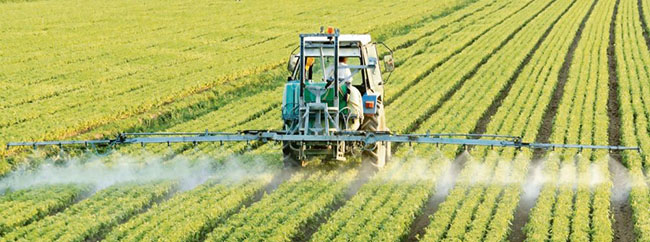The term agrochemical is used as a generic term for the chemical products or pesticides used in agriculture. The main factors included are fungicides, herbicides and insecticides, as well as synthetic fertilizers, hormones and soil conditioning agents. Agrochemicals play a crucial role in modern industrialized and intensive farming methods, making the growth of foods on previously uncultivatable land become possible and maximizing the yield of a given soil.

The contents of agrochemical analysis cover physicochemical character, active ingredient concentration analysis and pesticide residue analysis. How to analyze pesticides quickly and accurately is a very important task at present. Agrochemicals have experienced a long way since the creation of synthetic fertilizers, and the need to better understand or optimize both the agrochemical production process and the formulation make up of agrochemicals is becoming more apparent. According to the different characteristics, different detection methods such as liquid chromatography (LC) or gas chromatography (GC), high performance liquid chromatography (HPLC) or gas/liquid chromatography-mass spectrometry (GC-MS/LC-MS) can be used for agrochemical analysis.
Agrochemical Analysis at Creative Proteomics
Creative Proteomics can help with the analysis and optimization of your agrochemical products to assist the development of new agrochemicals and for quality control and production optimization by a range of analytical tools.
- Physical and chemical analysis of agrochemicals
Pesticide physical and chemical test indicators mainly include moisture, pH, melting point, fineness, emulsion stability, suspension rate and heat storage stability. We can offer you to:
- Sort soil types relate to their composition and physical characteristics
- Improve dissolution behavior and activity rate of fertilizers and pesticides
- Confirm particle size and shape of powder formulations to ensure optimum and consistent flow and packing characteristics.
- Content analysis of active ingredients
Analysis of active ingredients pesticides normally contains insecticide analysis, fungicide analysis, herbicide analysis and plant growth regulator analysis. By the help of analytical instruments and validated methods, we can provide accurate and professional content analysis of active ingredients.
- Insecticide. We can analysis various kinds of insecticides, including organochlorine insecticides, organophosphorus insecticide, dimethoate, and so on. Organochlorine insecticide (benzene hexachloride or DDT, chlorpyrifos) is highly toxic and difficult to break down, it has carcinogenic effects. Benzene hexachloride (BHC) is a cholinesterase inhibitor that acts on the nerve membrane, causing insects to malfunction, paralyzed to death. Organophosphorus insecticide (methamidophos or dimethoate) takes up 70% of insecticide and its nature is unstable. Dimethoate is a systemic organophosphate insecticide and acaricide and it has a wide range of insecticides and has strong contact and certain stomach toxicity to pests or mites. Methyl carbamate insecticide has a wide spectrum of insecticides and low toxicity such as aldicarb or carbaryl. And these insecticides can be detected by LC or GC.
- Fungicide. Such as carbendazim, phenazine oxide, and zineb all belong to fungicide. We can use iodometric method to analyze its content.
- Herbicide. Herbicides inhibit the life of weeds but are harmless to animals, for example, diuron and linuron, atrazine. Normally, we can detect most herbicides by GC.
- Plant growth regulator. Plant growth regulators are chemicals which can be applied to plant from the outside and alter the growth or development of plants, such as auxin, cytokinin and defoliant.
- Pesticide residue analysis
Pesticide residues refer to pesticides and their toxic metabolites that remain in plants, soils and the environment. Due to the low level of pesticide residues, complex analysis process and high technical requirements, we can provide a more convenient way to solve your problems.
- Thin layer chromatography (TLC). This method is fast and intuitive without special instruments, and can analyze trace and multiple samples simultaneously.
- HPLC. HPLC can show its outstanding advantages for pesticides that are not easily vaporized or easily decomposed by heat.
- GC-MS. GC-MS is a combination of GC and MS. After the residual pesticides in the sample were separated by GC, they were subjected to full-spectrum scanning of mass spectra from low mass to high mass. Not only can the target compound be separated from the interfering impurities, but it can also distinguish between samples which cannot be separated or completely separated.
- LC-MS. LC-MS is a method of joining LC and MS using internal jet and particle flow interface. It is mainly used to analyze samples with thermal instability, large molecular weight and difficult to be analyzed by GC.
Creative Proteomics could help you with the analysis and optimization of your agrochemical products to assist the development of new agrochemicals and for quality control and production optimization. We also could provide a range of analytical services for identification of agrochemical products. Please contact us in time, we can offer you the fastest and most optimized solution.
Reference
- Prudente, I. R. G., et al. Evidence of risks of renal function reduction due to occupational exposure to agrochemicals: A Systematic review. Environ Toxicol Phar. 2018, 8(63).




